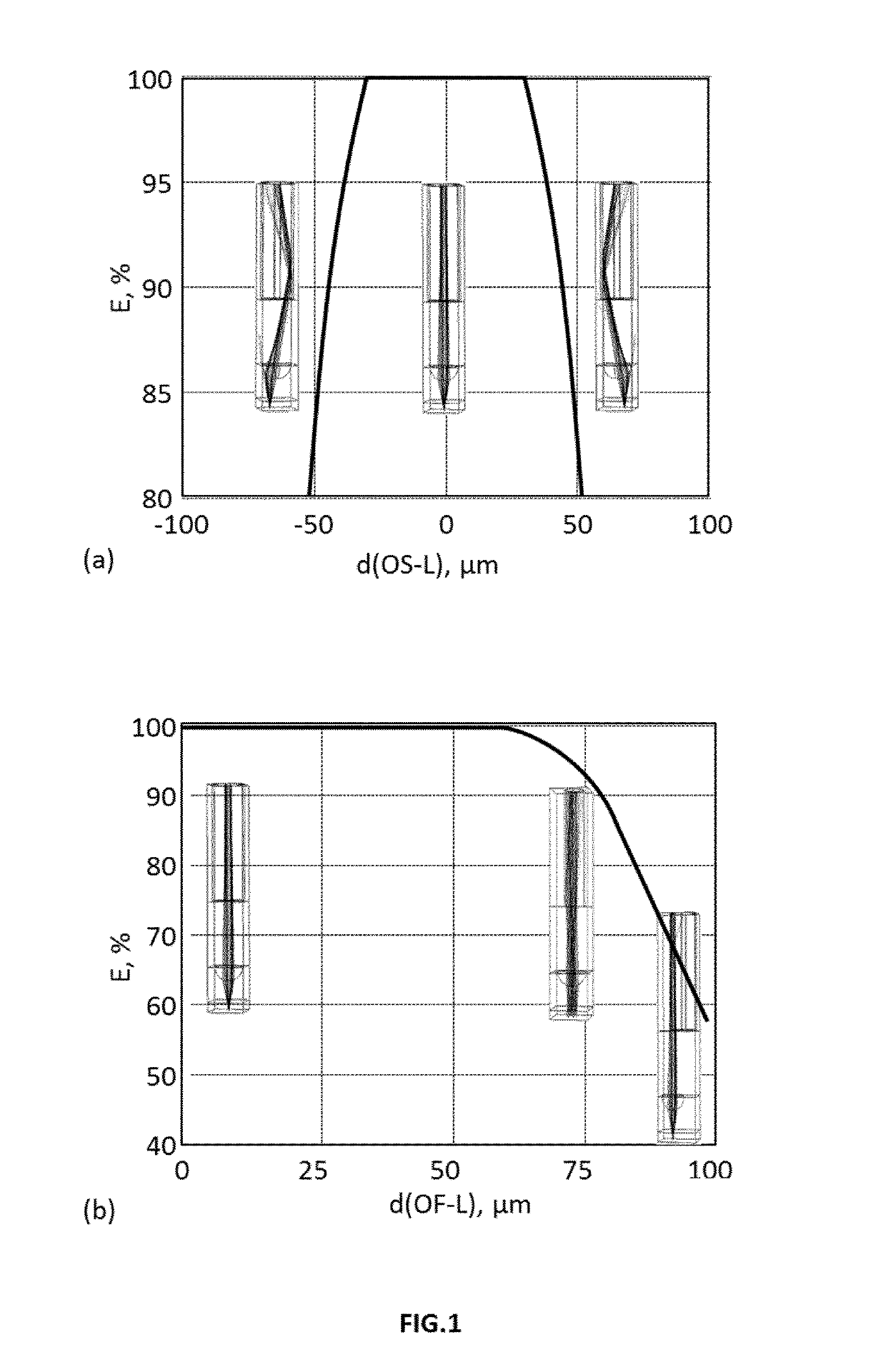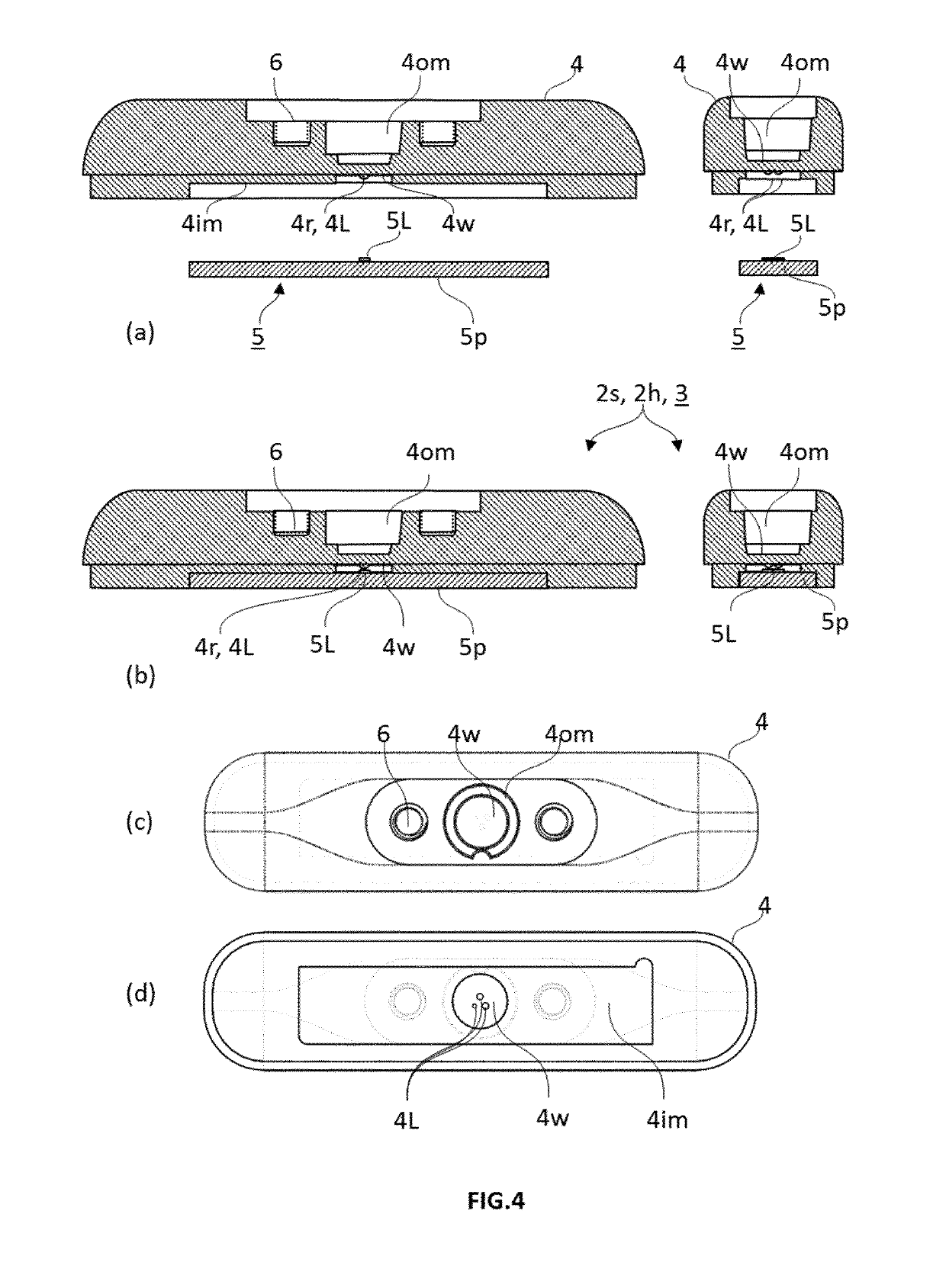Implantable medical device comprising an optical unit
a medical device and optical unit technology, applied in the field of implantable medical devices, can solve the problems of imd's longevity, imd's failure, limitation of their autonomy, etc., and achieve the effect of prolonging the autonomy of the imd
- Summary
- Abstract
- Description
- Claims
- Application Information
AI Technical Summary
Benefits of technology
Problems solved by technology
Method used
Image
Examples
first embodiment
[0063]In a first embodiment, the optical unit (3) can be an integral part of the main housing element (2m) or of the secondary element (2s). For example, FIGS. 3 to 5 illustrate an embodiment wherein the optical unit (3) forms a header (2h) of the housing. Additionally to forming part of the optical unit (3) and to supporting the light unit (5), the monolithic block unit (4) is shaped to form a header fitting an opening (20) provided in the main housing component, and sealed thereto by a secondary joint (7s). In this embodiment, the secondary joint (7s) between the header and the main housing element can advantageously be the sole external joint separating the inner volume from the outer environment. It is preferred that the IMD comprises as single external joint a secondary joint (7s). This is advantageous in that the probability of a leak is reduced. An external joint in the housing is any joint between two elements exposed to both housing inner volume and outer environment. It is...
second embodiment
[0065]In a second embodiment, the optical unit (3) can be sealingly coupled by a hermetic joint (7) to an opening (20) provided in the housing. In one example illustrated in FIG. 6, the optical unit is sealingly coupled to an opening provided in a secondary element (2s) forming a header (2h), by means of a hermetic joint (7). Unlike the monolithic block unit (4), the header (2h) in this embodiment needs not be transparent. The header is sealed to the main housing element by means of a secondary joint (7s).
[0066]In yet another example illustrated in FIG. 7, the optical unit (3) can be sealingly coupled to an opening (20) provided in the main housing element (2m) by means of a hermetic joint (7). Again, the main housing element needs not be transparent. The secondary element (2s) can be a header (2h) or a lid (2L) and can be sealingly coupled to the main housing element by means of a secondary joint (7s).
[0067]In the first embodiment wherein the optical unit (3) is an integral part of...
PUM
 Login to View More
Login to View More Abstract
Description
Claims
Application Information
 Login to View More
Login to View More - R&D
- Intellectual Property
- Life Sciences
- Materials
- Tech Scout
- Unparalleled Data Quality
- Higher Quality Content
- 60% Fewer Hallucinations
Browse by: Latest US Patents, China's latest patents, Technical Efficacy Thesaurus, Application Domain, Technology Topic, Popular Technical Reports.
© 2025 PatSnap. All rights reserved.Legal|Privacy policy|Modern Slavery Act Transparency Statement|Sitemap|About US| Contact US: help@patsnap.com



